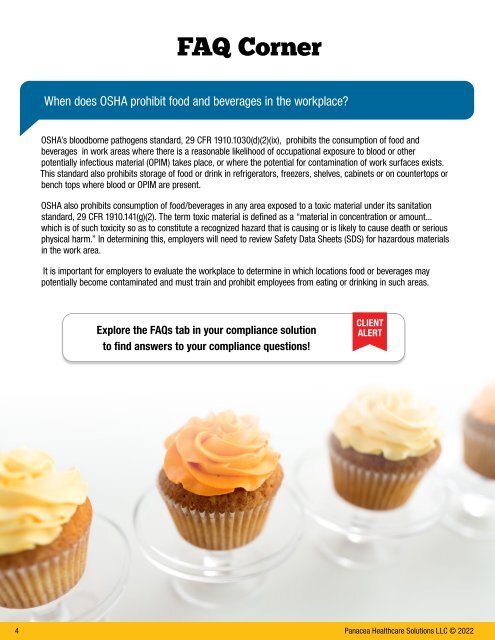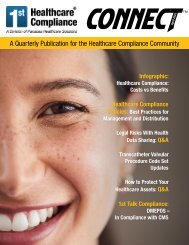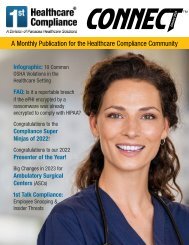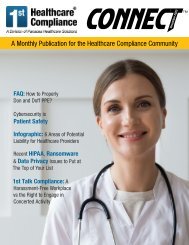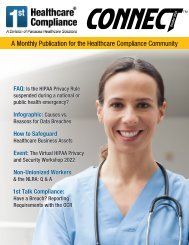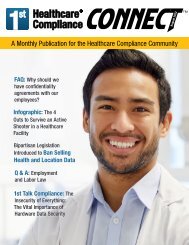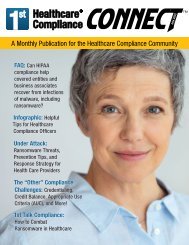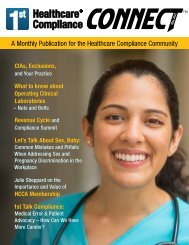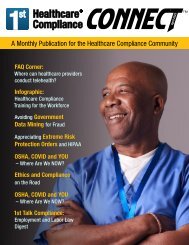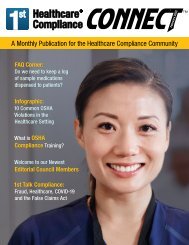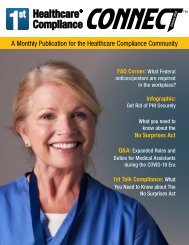First Healthcare Compliance CONNECT November 2022
Create successful ePaper yourself
Turn your PDF publications into a flip-book with our unique Google optimized e-Paper software.
FAQ Corner<br />
When does OSHA prohibit food and beverages in the workplace?<br />
OSHA’s bloodborne pathogens standard, 29 CFR 1910.1030(d)(2)(ix), prohibits the consumption of food and<br />
beverages in work areas where there is a reasonable likelihood of occupational exposure to blood or other<br />
potentially infectious material (OPIM) takes place, or where the potential for contamination of work surfaces exists.<br />
This standard also prohibits storage of food or drink in refrigerators, freezers, shelves, cabinets or on countertops or<br />
bench tops where blood or OPIM are present.<br />
OSHA also prohibits consumption of food/beverages in any area exposed to a toxic material under its sanitation<br />
standard, 29 CFR 1910.141(g)(2). The term toxic material is defined as a “material in concentration or amount...<br />
which is of such toxicity so as to constitute a recognized hazard that is causing or is likely to cause death or serious<br />
physical harm.” In determining this, employers will need to review Safety Data Sheets (SDS) for hazardous materials<br />
in the work area.<br />
It is important for employers to evaluate the workplace to determine in which locations food or beverages may<br />
potentially become contaminated and must train and prohibit employees from eating or drinking in such areas.<br />
Explore the FAQs tab in your compliance solution<br />
to find answers to your compliance questions!<br />
CLIENT<br />
ALERT<br />
4<br />
Panacea <strong>Healthcare</strong> Solutions LLC © <strong>2022</strong>


